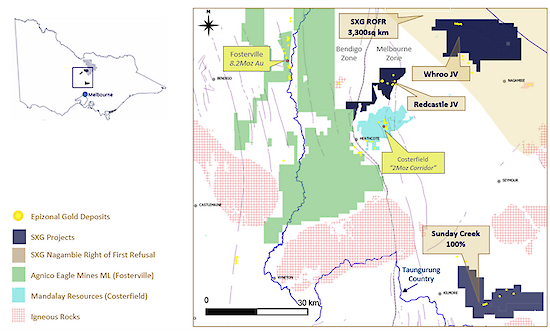Vancouver, Canada — Mawson Gold Limited (“Mawson” or the “Company”) (TSXV:MAW) (Frankfurt:MXR) (PINKSHEETS: MWSNF) announces Southern Cross Gold Ltd. (“Southern Cross Gold” or “SXG”) has provided a geological update with an outline of vein morphology and continuity at its 100% owned Sunday Creek Project in Victoria, Australia (Figure 12). SXG is an Australian Securities Exchange (“ASX”) listed company owned 51% by Mawson.
Highlights:
|
Michael Hudson, Mawson Interim CEO and Executive Chairman, states: “The Company will soon release a maiden Exploration Target for the Apollo and Rising Sun areas at Sunday Creek. This update describes vein morphology and geological and vein continuity to provide geological context for the Exploration Target.
“The observations made here are important because, while geological continuity is critical when constructing a mineral deposit model, in most cases it is the continuity of the grade of the mineralization that will determine the economic nature of a deposit.”
As is standard in industry, Southern Cross Gold is applying multiple datasets to build the Sunday Creek geological and mineralization model. These are described below.
Geostatistics
A total of 42 mineralized vein set shapes have been created for Sunday Creek. Wireframes were created in Leapfrog Geo using a threshold of 1 g/t Au over 2 m. Modelling consistently shows the vein sets have a higher-grade core with broader lower grade halos. The Company, along with leading global consultants, are preparing grade variography with volumes determined by a strong understanding of geological and grade continuity, trends and other supporting information. The mineralization model provides the first geostatistical summary of the project.
Coefficient of variation
The coefficient of variation (“CV”) is the ratio of the standard deviation to the average of the assay results. The lower the CV, the less variable and erratic the distribution of the mineralization is, and therefore it is easier to model (Table 1).
In Apollo, where sufficient drill density and drill spacing is present, geostatistical assessment provides validity of the geological shapes (Table 2). Within Apollo, the average of all the vein sets has a CV below 1.5 when applied to 1 m composite data and an average CV of less than 2 for raw assays (Table 2). Rising Sun requires further drilling before similar calculations can be made. The CV at Apollo implies both a strong understanding of the geological controls on mineralization, correct sub-domaining of high tenor material and the predictability of high-grade mineralization within these shapes.
| Coefficient of Variation (CV) Range | <1 | 1-2 | 2-5 | >5 |
| Qualitative Description | Excellent | Good | High | Extreme |
Table 1: Qualitative description of the range of the Coefficient of Variation (“CV”) within mineral systems. The lower the CV, the less variable and erratic the distribution of the mineralization is, and therefore it is easier to model.
Stereonets
All diamond drill core drilled by Southern Cross Gold is orientated. Orientation data can place structures measured in drill core in 3-dimensional space. A measure of confidence is assigned to ensure only quality data are utilized and drill bias, or inaccurate measurements, do not materially influence the interpretation. Combined with triangulation of intercepts (minimum three points on a plane to determine an orientation) high confidence in structural continuity of vein sets is maintained. This allows for major trends and critical controls on high grade trends or linking features to be identified.
Geological controls on mineralization (structural, chemical, stratigraphic) exist in every ore deposit and Sunday Creek is no different. Mineralization is structurally controlled, with increased mineralization associated within the “bleaching” around and within the intrusive sequence. Early alteration and sulphide (pyrite) mineralization exploited the vesicular/amygdaloidal nature of the pervasively altered/mineralized dyke and the brecciated areas, and forms east-west trending pyrite veinlets. Stereonet data supports this observation and shows pyritic veins parallel the east-west structural host and predates the higher tenor NNW Au-Sb mineralized vein sets (Figure 1).
Stereonet data (Figure 1) also demonstrates that gold-antimony (“Au-Sb”) mineralization is dominantly hosted within zones of sub-vertical, brittle-ductile NNW-NW striking shear veins and associated veins, containing visible gold, quartz, stibnite, occasional fibrous sulphosalts and minor ferroan carbonates infill. The veins have an associated selvedge of disseminated sulphides in the form of arsenian pyrite, pyrite and arsenopyrite. The mineralized vein sets are typically between 5-30 m wide, 20-100 m in strike (see Figures 5-7 which show 3 individual veins strike distance 30-40 m, 25-40 m, 40-55 m and up to 110 m) and currently defined vertically down to 1 km depth and up to 570 m in depth extent on an individual vein set basis. These zones repeat every 10-20 m within the Apollo and Rising Sun areas with 42 vein sets currently defined to date.
When observed from above, the altered sediment and dyke host resembles the side rails of a ladder, where the sub-vertical mineralized vein sets are the rungs that extend from surface to depth (Figures 5-7).
Quality Control Data
Drilling recovery at Sunday Creek is excellent (99.2% average core recovery). All samples are oriented diamond core, predominately HQ core size. Quality control data is routinely acquired. Standards are inserted at regular intervals and show appropriate consistency. Both field duplicates (quarter core) and laboratory duplicates (from the LM5 pulverizer) show good consistency implying homogenization at both the core and pulp sampling stages with low variability (Figure 2). Addtional screen fire assay data compares favourably with fire assay data showing the homogenization of mineralization, and low nugget effect after pulverization (Figure 3).
Predictability
The Company is now able to plan drill holes and predict, with a high degree of confidence, the vertical and lateral extents of high-grade mineralization within the altered “bleached” sediment and dyke host. This is best evidenced at the Rising Sun area where our drilling over the last 6 months has expanded the strike and footprint of these vein sets. Longitudinal section views of vein sets RS10, RS20 and RS80 with mineralized intercepts are shown (Figures 4-7) to demonstrate how the Company is building predictability of veins sets with continued drilling.
Geological Likeness
A strong component of the geological domaining of vein sets and high-grade individual veins relies on the geological similarities of the interval; similar mineralogy, vein types and textures are critical to identifying the domain, as well as consistent orientations ensuring that assays are not simply being linked together in a coincidental manner. Figures 8-9 show examples of textural similarity of veins and breccias containing high grade gold from recent drillholes.
Old mining areas
Hard rock mining at Sunday Creek commenced in the 1870’s and continued until after World War 1. Fifty years of historic mining records and remanent stoping highlight similar observations of the E-W host and continuity of the NW veins set structures. Whitelaw (1899) describes the “ladder” structure of the host structure “rails” and vein set “rungs” as observed today:
“Sulphide in large and oxide in small quantities occur in connexion (sic) with numerous quartz reefs crossing a strong well defined diorite dyke, which cuts diagonally through the enclosing Silurian slates and sandstones of Sunday Creek, 8 miles east of Kilmore. The dyke has an average width of 80 feet it strikes E 100 N. It has been traced on the surface for over two miles uninterruptedly, is very fine grained, contains a large amount of arsenial (sic) and iron pyrites disseminated throughout, and towards the north is somewhat porphyritic in structure, passing over into aphanitic porphyry. It is generally a greenish colour.”
“Cutting through the dyke in a direction N100W, at intervals every few yards occur mineral reefs composed mostly of quartz, antimony, pyrites and breccias of the adjacent “country”. Of these reefs, every one that has been exploited has proved auriferous.”
Additionally, historic mining stope orientations are consistent with surrounding orientated drill core and mineralized intercepts. Drilled mineralization at Apollo coincides spatially with historic stopes and development (Figure 10). LiDAR surface mapping also shows the consistent mining of the mineralized “rungs” in a NW direction across the 10 km trend of historic surface workings at Sunday Creek (Figure 11).
Pre-Resource Studies
SRK Consulting (Australasia) Pty Ltd (“SRK”) have been engaged to work with in-house staff for ongoing modelling assistance and the eventual preparation of a Mineral Resource Estimate, consistent with the requirements of the 2012 edition of the JORC Code.
In-House and External Expertise
Southern Cross Management and Board have deep internal technical experience and the Company is led by those with who have made multiple discoveries which have advanced to mining across the globe over the last 30 years.
The SXG Board is Chaired by Tom Eadie, a seasoned explorer with numerous discoveries and capital market successes. Likewise, David Henstridge is an industry veteran who has dedicated his career to mineral discovery and the capital markets. Georgina Carnegie has a long career in mining and finance and provides strong strategic and governmental advice.
Management is led by Michael Hudson, Managing Director, who has +30 years of mine and exploration experience with multiple gold, base metal and REE mineral discoveries. Lisa Gibbons, General Manager, has been involved with multiple gold discoveries with North Flinders Mines, Normandy and Newmont in Australia. Kenneth Bush, Exploration Manager is an experienced (>10 years) exploration and mine geologist specialising in 3D geological and structural modelling. He has worked extensively in Victoria on some of the highest-grade gold mines in the world including Costerfield and Fosterville. The Company also employs several experienced geological and geotechnical staff, augmented by highly experienced geological consultants.
About Sunday Creek
History
The Sunday Creek deposit is a high level orogenic (or epizonal) deposit. Small scale mining has been undertaken in the project area since the 1880s continuing through to the early 1900s. Historical production occurred with multiple small shafts and alluvial workings across the existing permits. Past production at the Sunday Creek prospect is reported as 41,000 oz gold at a grade of 33 g/t gold. Larger historic workings along the trend from west to east include Christina, Golden Dyke, Rising Sun and Apollo.
Regional Geology
Sunday Creek occurs with the Melbourne Zone of the Lachlan Geosyncline, in sequences folded and thrust-faulted by the Late Devonian Tabberabberan Orogeny. The regional host to the Sunday Creek mineralization is an interbedded turbidite sequence of siltstones, mudstones, and minor sandstones, metamorphosed to sub-greenschist facies and folded into a set of open north-west trending synclines and anticlines.
Structural Setting and Local Geology
Intruded into the sedimentary sequence is a series of intermediate monzodiorite – diorite dykes and breccias on an east-west trend. The Sunday Creek dykes have highly variable textures and compositions with the earliest emplaced aphanitic varieties emplaced along thin fracture sets. These fine-grained dykes locally grade into porphyritic to massive varieties as the thickness of the dykes increases and brecciate in areas of complexity or in proximity to fold hinges.
Large scale thrusts sub-parallel to the NW trending structural grain, dislocate the dyke system and an array of sub-vertical extension veins form subparallel to the bedding trend and orthogonal to the intruded dyke sequence. Veining is focused within areas of high competency contrast, such as the intruded dyke and surrounding alteration, fold hinges and areas of structural complexity.
Alteration
Distally a regional chlorite alteration weakly pervades the sediments, with a change in mica composition from phengitic to muscovitic mica approaching mineralization, an increase in carbonate spotting and cementation and proximal to the dyke a very intense texturally destructive alteration of sericite-carbonate-silica “bleaching” of the sediments.
Further Information
Further discussion and analysis of the Sunday Creek project is available through the interactive Vrify 3D animations, presentations and videos all available on the SXG website. These data, along with an interview on these results with Managing Director Michael Hudson, with a 3D Leapfrog presentation, can be viewed at www.southerncrossgold.com.au
Gold Equivalent Calculation
SXG considers that both gold and antimony that are included in the gold equivalent calculation (“AuEq") have reasonable potential to be recovered at Sunday Creek, given current geochemical understanding, historic production statistics and geologically analogous mining operations. Historically, ore from Sunday Creek was treated onsite or shipped to the Costerfield mine, located 54 km to the northwest of the project, for processing during WW1. The Costerfield mine corridor, now owned by Mandalay Resources Ltd contains two million ounces of equivalent gold (Mandalay Q3 2021 Results), and in 2020 was the sixth highest-grade global underground mine and a top 5 global producer of antimony.
SXG considers that it is appropriate to adopt the same gold equivalent variables as Mandalay Resources Ltd in its Mandalay Technical Report, 2022 dated 25 March 2022. The gold equivalence formula used by Mandalay Resources was calculated using recoveries achieved at the Costerfield Property Brunswick Processing Plant during 2020, using a gold price of US$1,700 per ounce, an antimony price of US$8,500 per tonne and 2021 total year metal recoveries of 93% for gold and 95% for antimony, and is as follows:
AuEq = Au (g/t) +1.58 x Sb (%).
Based on the latest Costerfield calculation and given the similar geological styles and historic toll treatment of Sunday Creek mineralization at Costerfield, SXG considers that a AuEq = Au (g/t) +1.58 x Sb (%) is appropriate to use for the initial exploration targeting of gold-antimony mineralization at Sunday Creek.
Technical Background and Qualified Person
The Qualified Person, Michael Hudson, Executive Chairman and a director of Mawson Gold, and a Fellow of the Australasian Institute of Mining and Metallurgy, has reviewed, verified and approved the technical contents of this release.
Analytical samples are transported to the Bendigo facility of On Site Laboratory Services (“On Site”) which operates under both an ISO 9001 and NATA quality systems. Samples were prepared and analyzed for gold using the fire assay technique (PE01S method; 25 gram charge), followed by measuring the gold in solution with flame AAS equipment. Samples for multi-element analysis (BM011 and over-range methods as required) use aqua regia digestion and ICP-MS analysis. The QA/QC program of Southern Cross Gold consists of the systematic insertion of certified standards of known gold content, blanks within interpreted mineralized rock and quarter core duplicates. In addition, On Site inserts blanks and standards into the analytical process.
MAW considers that both gold and antimony that are included in the gold equivalent calculation (“AuEq") have reasonable potential to be recovered at Sunday Creek, given current geochemical understanding, historic production statistics and geologically analogous mining operations. Historically, ore from Sunday Creek was treated onsite or shipped to the Costerfield mine, located 54 km to the northwest of the project, for processing during WW1. The Costerfield mine corridor, now owned by Mandalay Resources Ltd contains two million ounces of equivalent gold (Mandalay Q3 2021 Results), and in 2020 was the sixth highest-grade global underground mine and a top 5 global producer of antimony.
SXG considers that it is appropriate to adopt the same gold equivalent variables as Mandalay Resources Ltd in its Mandalay Technical Report, 2022 dated 25 March 2022. The gold equivalence formula used by Mandalay Resources was calculated using recoveries achieved at the Costerfield Property Brunswick Processing Plant during 2020, using a gold price of US$1,700 per ounce, an antimony price of US$8,500 per tonne and 2021 total year metal recoveries of 93% for gold and 95% for antimony, and is as follows: AuEq = Au (g/t) +1.58 x Sb (%)).
Based on the latest Costerfield calculation and given the similar geological styles and historic toll treatment of Sunday Creek mineralization at Costerfield, SXG considers that a AuEq = Au (g/t) +1.58 x Sb (%) is appropriate to use for the initial exploration targeting of gold-antimony mineralization at Sunday Creek.
Certain information in this announcement that relates to historic mining is extracted from the Independent Geologist’s Report, titled “Independent Geologists Report Southern Cross Gold” dated 16 March 2022 which was issued with the consent of the Mr Terry C. Lees. The report was released as an announcement to ASX on 12 May 2022 and is available at www2.asx.com.au under code “SXG”. The Company confirms that it is not aware of any new information or data that materially affects the information related to exploration results included in the original market announcement. Certain information in this announcement also relates to prior drill hole exploration results, are extracted from the following announcements, which are available to view on www.southerncrossgold.com.au:
7 October, 2020 MDDSC003, 27 October, 2021 MDDSC020 & 21, 16 May, 2022 CRC021, VCRC022, 1 June, 2023 SDDSC066, 4 October, 2022 SDDSC041, 43 & 46, 21 November, 2022 SDDSC050, 14 December, 2022 SDDSC050, 28 February, 2023 SDDSC053 & 55, 16 May, 2023 SDDSC064, 3 July, 2023 SDDSC069, 28 August, 2023 SDDSC078, 5 September, 2023 SDDSC077B, 12 October, 2023 SDDLV003 & 4, 23 October, 2023 SDDSC080 & 82, 9 November, 2023 SDDSC091, 14 December, 2023 SDDSC092, 11 January, 2024 SDDSC097A.
About Mawson Gold Limited (TSXV:MAW, FRANKFURT:MXR, OTCPINK:MWSNF)
Mawson Gold Limited has distinguished itself as a leading Nordic exploration company. Over the last decades, the team behind Mawson has forged a long and successful record of discovering, financing, and advancing mineral projects in the Nordics and Australia. Mawson holds the Skellefteå North gold discovery and a portfolio of historic uranium resources in Sweden. Mawson also holds 51% of Southern Cross Gold Ltd. (ASX:SXG) which owns or controls three high-grade, historic epizonal goldfields covering 470 km2 in Victoria, Australia, including the exciting Sunday Creek Au-Sb discovery.
About Southern Cross Gold Ltd (ASX:SXG)
Southern Cross Gold holds the 100%-owned Sunday Creek project in Victoria and Mt Isa project in Queensland, the Redcastle and Whroo joint ventures in Victoria, Australia, and a strategic 10% holding in ASX-listed Nagambie Resources Limited (ASX:NAG) which grants SXG a Right of First Refusal over a 3,300 square kilometer tenement package held by NAG in Victoria.
On behalf of the Board,
"Michael Hudson" | Further Information |
Forward-Looking Statement
This news release contains forward-looking statements or forward-looking information within the meaning of applicable securities laws (collectively, "forward-looking statements"). All statements herein, other than statements of historical fact, are forward-looking statements. Although Mawson believes that such statements are reasonable, it can give no assurance that such expectations will prove to be correct. Forward-looking statements are typically identified by words such as: believe, expect, anticipate, intend, estimate, postulate, and similar expressions, or are those, which, by their nature, refer to future events. Mawson cautions investors that any forward-looking statements are not guarantees of future results or performance, and that actual results may differ materially from those in forward-looking statements as a result of various factors, including, Mawson’s expectations regarding its ownership interest in Southern Cross Gold, capital and other costs varying significantly from estimates, changes in world metal markets, changes in equity markets, the potential impact of epidemics, pandemics or other public health crises, including COVID-19, on the Company’s business, risks related to negative publicity with respect to the Company or the mining industry in general; exploration potential being conceptual in nature, there being insufficient exploration to define a mineral resource on the Australian-projects owned by SXG, and uncertainty if further exploration will result in the determination of a mineral resource; planned drill programs and results varying from expectations, delays in obtaining results, equipment failure, unexpected geological conditions, local community relations, dealings with non-governmental organizations, delays in operations due to permit grants, environmental and safety risks, and other risks and uncertainties disclosed under the heading "Risk Factors" in Mawson's most recent Annual Information Form filed on SEDAR. Any forward-looking statement speaks only as of the date on which it is made and, except as may be required by applicable securities laws, Mawson disclaims any intent or obligation to update any forward-looking statement, whether as a result of new information, future events or results or otherwise.
Table 2: Statistics of Au g/t within modelled domain shapes in Apollo. Values are raw assays.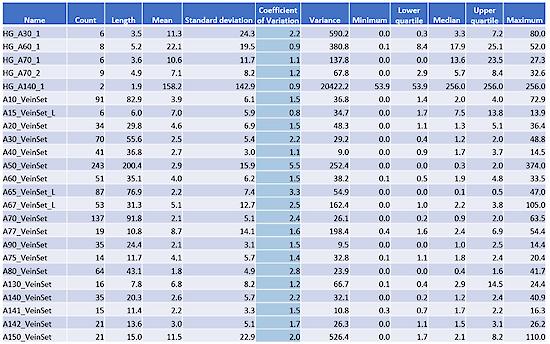
Figure 1: Stereonets showing poles to veins measured in oriented drill core. Stereonet data shows pyritic veins parallels the east-west structural host and predates the higher tenor NNW Au-Sb mineralized vein sets and gold-antimony (“Au-Sb”) mineralization is dominantly hosted within zones of sub-vertical, brittle-ductile NW striking shear veins and associated veins.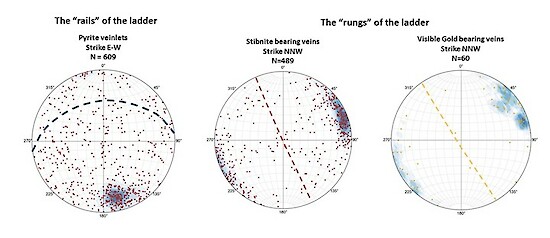
Figure 2: Quality control data showing field duplicates (325 quarter core samples) and laboratory duplicates (2,614 samples from the LM5 pulverizer) show good consistency implying homogenization at both the core and pulp sampling stages with low variability.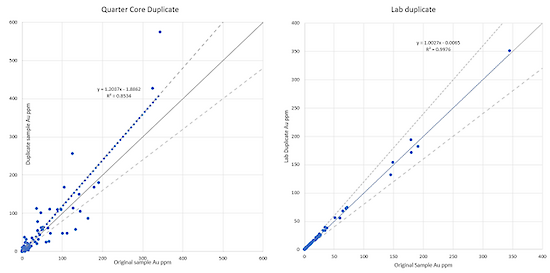
Figure 3: Quality control data showing screen fire assay data (110 samples) compares favourably with fire assay data showing the homogenization of mineralization, and low nugget effect after pulverization.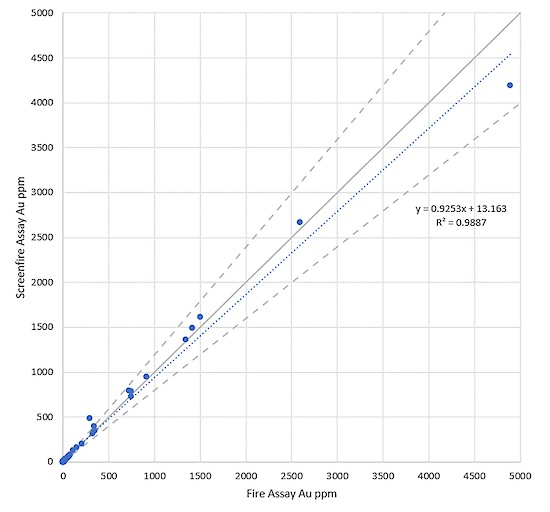
Figure 4: Longitudinal Section showing location of RS10, RS20 and RS80 vein sets.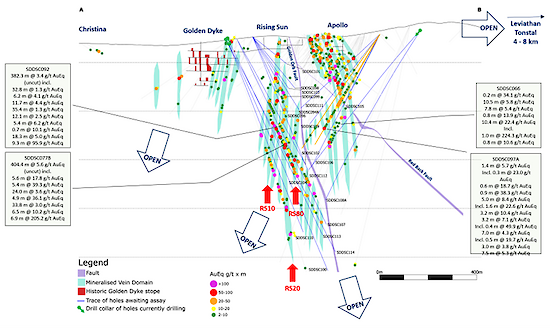
Figure 5: RS10 vein set defined at a 25 m x 50 m spacing extending over 570 m down dip and 30 m – 40 m along strike, with a 2 m @ 1 g/t Au lower cut-off grade. Drill density only limits extensions in all directions.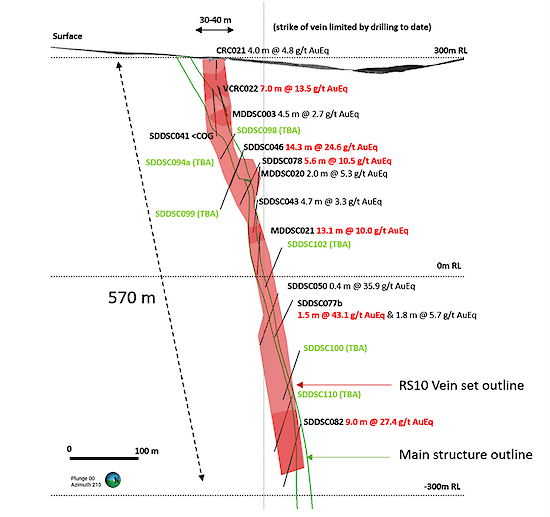
Figure 6: RS20 vein set defined at a 25 m x 50 m spacing extending over 275 m down dip and 25 m – 40 m along strike, with a 2m @ 1 g/t Au lower cut-off grade. Drill density only limits extensions in all directions.
Figure 7: RS80 vein defined at a 25 m x 50 m spacing, set extending over 180 m down dip and 40 m – 55 m along strike (up to 110 m), with a 2m @ 1 g/t Au lower cut-off grade. Drill density only limits extensions in all directions.
Figure 8: A strong component of the geological domaining of vein sets and high-grade individual veins relies on the geological similarities of the interval; similar mineralogy, vein types and textures are critical to identifying the domain, as well as consistent orientations ensuring that assays are not simply being linked together in a coincident manner. Here examples from drillhole SDDSC082.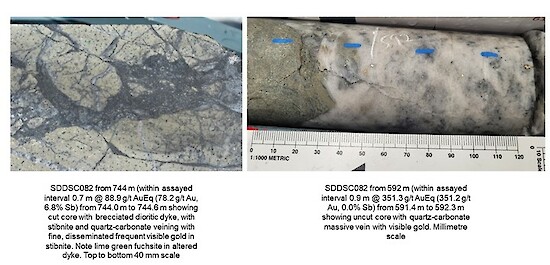
Figure 9: A strong component of the geological domaining of vein sets and high-grade individual veins relies on the geological similarities of the interval; similar mineralogy, vein types and textures are critical to identifying the domain, as well as consistent orientations ensuring that assays are not simply being linked together in a coincident manner. Here examples from drillholes SDDSC077B and SDDSC091.
Figure 10: Historic mining stope orientations are consistent with surrounding orientated drill core and mineralized intercepts. Modelling from modern day diamond drilling within Apollo coincides spatially with historic stopes and development.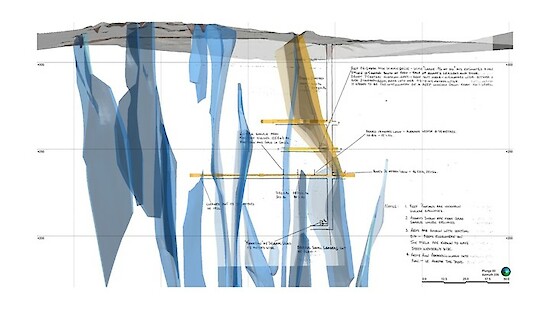
Figure 11: Sunday Creek regional plan view showing LiDAR, soil sampling, structural framework, regional historic epizonal gold mining areas and broad regional areas (Tonstal, Consols and Leviathan) tested by 12 holes for 2,383 m drill program. The regional drill areas are at Tonstal, Consols and Leviathan located 4,000-7,500 m along strike from the main drill area at Golden Dyke- Apollo.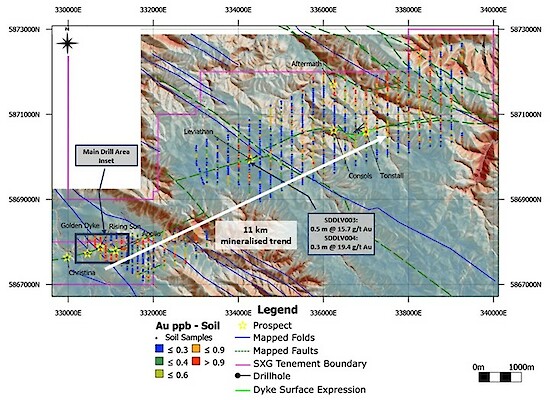
Figure 12: Location of the Sunday Creek project, along with SXG’s other Victoria projects and simplified geology.